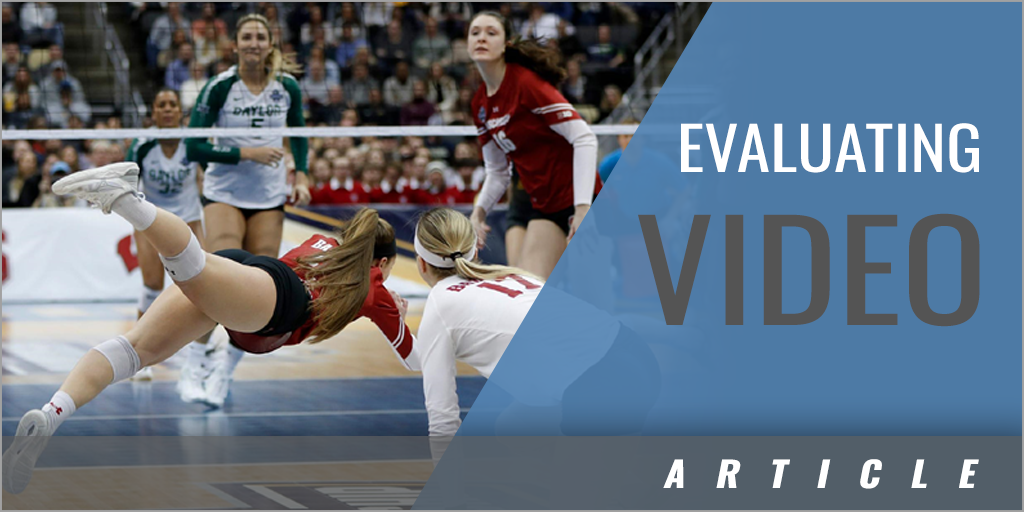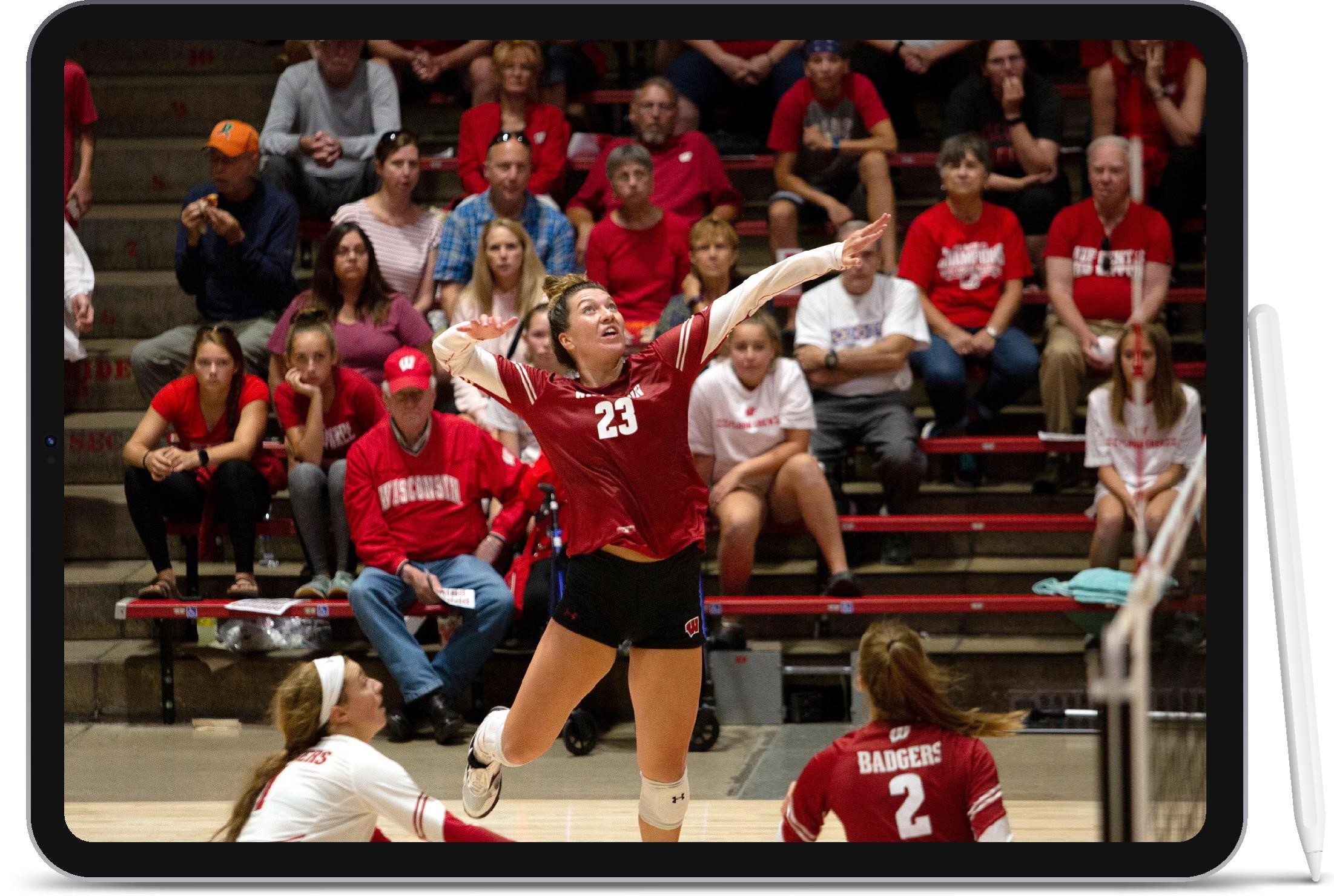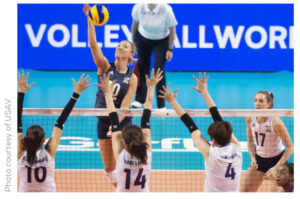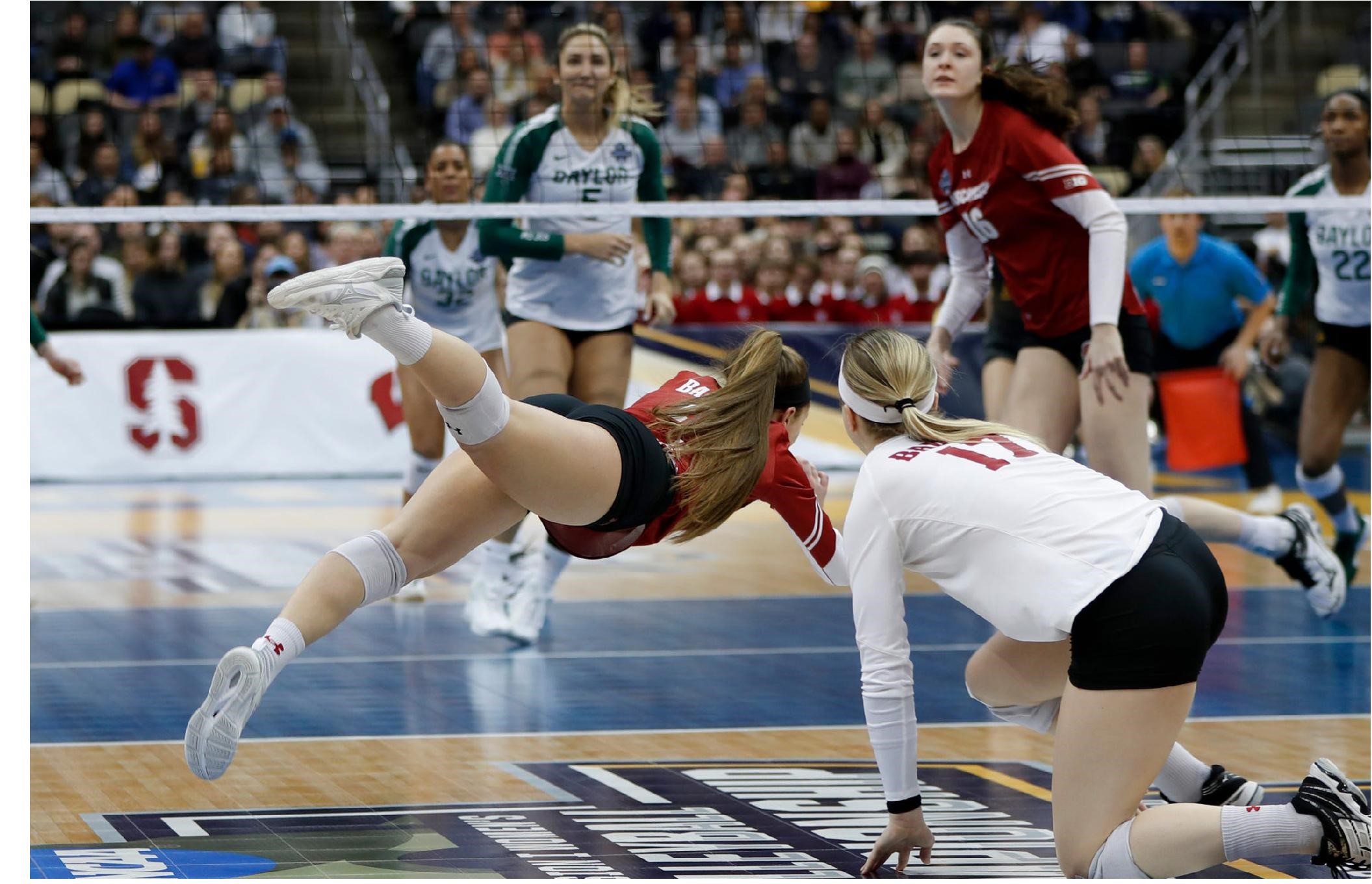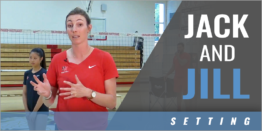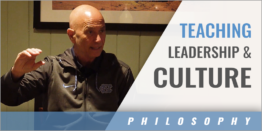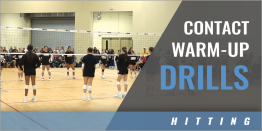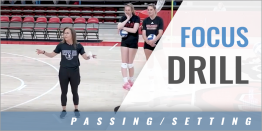|
By: Giuseppe Vinci - Founder, Hudl VolleyMetrics Originally Published in: Coaching Volleyball Copyright and Provided by: American Volleyball Coaches Association "We always talk to our players about their eye work, and try to get them to look at the right things," says Hudl VolleyMetrics founder, Giuseppe Vinci, "We never ask if we, as coaches, are looking at the right things when we evaluate video and break it down with them." So began a conversation between Vinci and three assistant coaches, Wisconsin's Gary White, USC's JJ Van Niel, and USAV's Luka Slabe. Vinci asked each to evaluate the same video clip and comment on what they would point out to the player in the clip. Their comments give insights into their eye work, i.e. where are their eye's drawn, which is a window into what they emphasize about skill development and performance.
Serve Reception: Gary White: I'll look at the feet first in the precontact part of the pass: is the passer balanced and still. Then, is her platform stable and her move simple; does she stay with her follow through for half a second. I try to see what she is looking at in analyzing the server's movement as that tells me how much the passer is 'reading' what's going to happen with the serve. I don't spend much time looking at where the ball goes because some passers will pass a flat ball, some with an arc, but I can tell by how they are moving and playing the ball where it is going to go. J.J. Van Niel: Our first look in serve receive is seam responsibility and working the angles so that our passers can pass on their left. Next, we evaluate the platform; we know hat early tracking and leading with the platform will produce better contact. We focus on this more than the feet. We do always want our passers facing the server, and while liberos may be able to take a short drop step before they pass, a front row outside hitting a quick set will lose time with that move. We also ask a lot of questions when we're analyzing video with a player because it helps us know what they are seeing. Luka Slabe: I look for her eyes to be on the server and looking at the toss. We want them to 'pick a side' to pass on as early as possible. The ball knows angles, so we want a simple platform. We'll talk about the feet but passing is about platform, so we don't spend much time on the feet unless the movement is inefficient. We look for and train 'repeatability.'
Outside Hitter Attack at the Pin: J.J. Van Niel: We always start with the feet; we know that to hit with range you have to have good footwork. Our initial evaluate is pass-no pass decision and how quickly that is made. If no pass, we want a five-step shuffle to get to the sideline for the attack approach. We use all the cliché's around the four-step approach: slow-to-fast, small-to-big, but we have started to talk more about acceleration because it's an easier concept to internalize. What we have tried with player video is grading each part of the preparatory and approach patterns with zeros and ones and showing the player how they correlate with their hitting percentage - that's been a powerful tool because the differences are so stark. On swing preparation we want a big, full-arm backswing and we look for the elbow to go way back behind the head. A player with a great arm can still hit with good power even if their footwork is not what it should be. Gary White: My first evaluation is how an attacker is responding in pass-to-hit situations, i.e. how does she respond to serves coming to different parts of her body. Video allows us to do precise work on time and tempo with our hitters to specify where they are in their approach when the setter contacts the ball. I evaluate the line of an attacker's approach and assess whether she get to a position where she can hit with range. Then I'll pick apart the jump mechanics and arm swing; does she start far enough off the net that she can swing through the ball? Does she finish over the top of the ball with her hand so the topspin takes the ball to floor faster. "We always talk to our players about their eye work, and try to get them to look at the right things, we never ask if we, as coaches, are looking at the right things when we evaluate video and break it down with them." - Giuseppe Vinci 5-1 Setter Entering From Rotation 1: Gary White: The first thing we look at is the speed and efficiency with which the setter can get to the 'setter pocket.' This is most difficult for a 5-1 setter in rotations 1, 3 and 4 so we work on those entry patterns a lot. When they are balanced and loaded, they can read the pass. The second look is the path she takes to get to the ball - is it direct. Our last evaluation is her hands, specifically the height at which she is taking the ball. We divide the hand position into three levels: the basement - contact at eye level, the first story - contact at the hairline, and the second story - contact above the head. International setters have strong enough wrists to set all balls from the second story, but most college setters will work from the first story where they can use their elbows and shoulders in the setting movement. The last look is the follow through, do the hands move in tandem through setting window. Luka Slabe: One major point of emphasis for us is that setters commit to face the passer's platform, so they do not take balls over their shoulder, but square to the attacker while setting. We also ask our setters to stay three to five feet off the net as that is our target passing zone. We want the fulcrum to be around the right foot. We ask our setters to 'read' the server and also their own passers. A good setter can pick up early that a passer is in trouble and will anticipate where the pass is going to go. In terms of set location and speed, we have established targets based on the approach of the attackers. Our outside location is three feet inside and three feet off the net. We also note when
Scouting an Opponent: Gary White: We start with the serve-pass and evaluate the best way to get an opponent out of system. Hitting percentages plummet when teams have to run their offenses from behind the ten-foot line, so it's worth it to spend time looking for weak passers and vulnerable seams. We'll also look at set distribution based on where the pass is coming from and see if we can narrow the options we are defending by knowing those tendencies. J.J. Van Niel: We analyze passers, trying to target the worst passer, or, if the setter goes away from a passing outside hitter, and she is a good swing attacker, we may serve her to cut down on her swings. The next thing we study is the routes and distribution of sets by rotation. Watching video before looking at statistics is a good way to view a team with fresh eyes. Looking at a number first can bias your perspective and decision-making. Luka Slabe: I always start from scratch with my own shot chart and knowledge. I'll check with the numbers after I have prepared by heat maps and hitter tendencies so I can see if I missed something, but I use the VolleyMetrics numbers to build on my personal evaluation not as a substitute for it. As the pandemic continues - Hudl will continue to provide coaches with resources to practice and improve their coaching skills across the board. Visit https://www.hudl.com/sports/volleyball to stay on top of webinars, demonstrations and tools that will be at your disposal around the clock. From using stats to drive success to building virtual workouts, the Hudl blog has you covered. |
